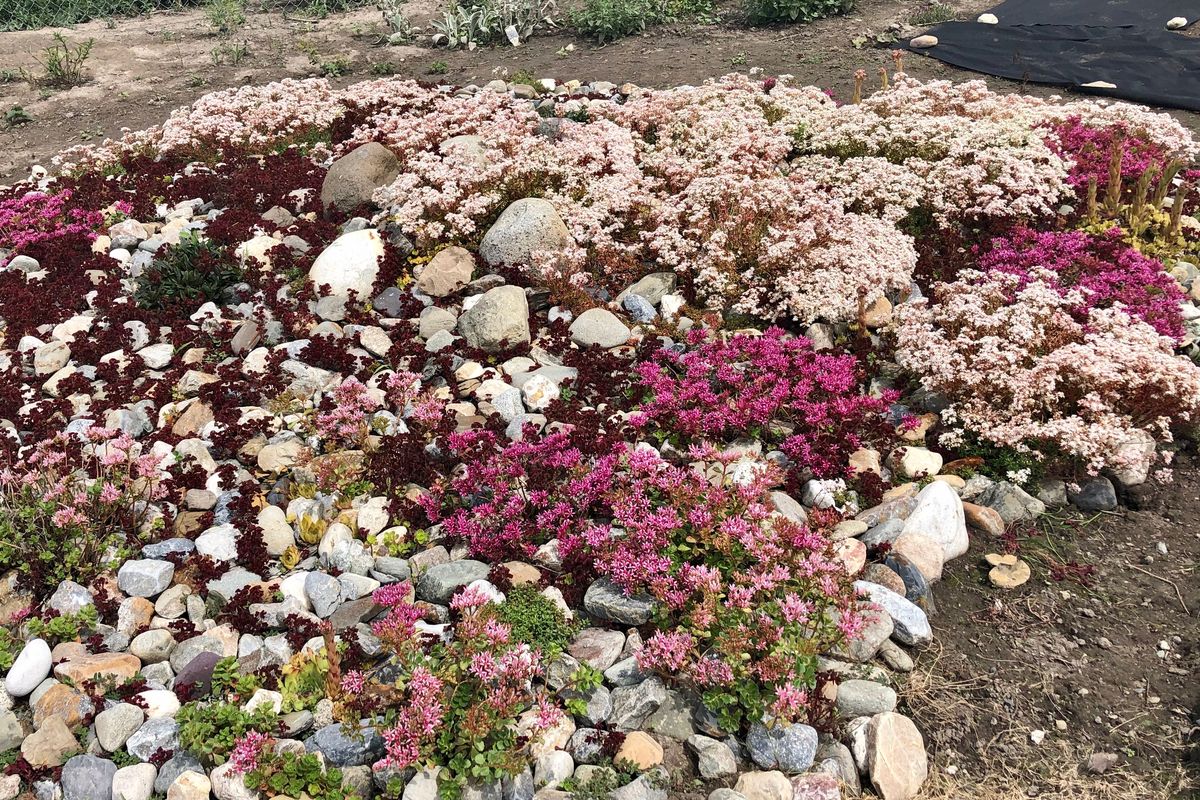Gardening: Volunteers show how to create Firewise landscape

As the summer winds down and temperatures cool, we need to remember that we are still in the height of fire season and defensible space around your home is important. Remember, Firestorm occurred on Oct. 16, 1991, and fire can occur anywhere.
In 2017 in Colville, the WSU Stevens County Master Gardeners teamed up with the Stevens County Emergency Services Department to create a Firewise Demonstration Garden at the Colville Community Garden run by St. Paul’s Lutheran Church. Located just off Highway 20 east of the city, the creation of the garden was a cooperative community effort.
“The concept benefited from a significant initial push in the form of a $4,000 grant that the Colville Community Garden Board received through the Stevens County Conservation District,” said master gardener Kathy Hansen, who helped develop the garden. “Numerous additional donations from private businesses and local government entities fueled the project, but the most significant factor in launching the garden was the boots-on-the-ground labor provided by master gardeners and other volunteers, who contributed 316 hours to two cost-match grants,”
The garden was an outgrowth of research for a publication on fire resistant plants, prepared by the master fardeners and titled Fire-Resistant Plants for Home Landscapes; (pubs.extension.wsu.edu/fireresistant-plants-for-home-landscapes.
The garden offers displays of plant and building materials that can help create defensible space around a home. Using a zoning system, the first zone is the space within 15 feet of the house.
“In the all-important “defensible space” zone closest to the structure, the slogan “lean, clean, and green” applies – vegetation thinned, debris cleared, space made for firefighting, and regular mowing and frequent watering,” Hansen said.
In this area, plantings should be low-growing, should have succulent or moist leaves and create little if any dry debris. Rock, concrete and hardscape should be used instead of flammable bark or compost mulches. Evergreens of any kind should not be planted in this zone. One interesting ground cover found in the garden for this area was strawberry plants.
The second zone is between 15 and 100 feet from the structure. In this zone, deciduous shrubs and trees, perennials, ground covers and lawns that don’t generate a lot of dry debris can be planted. All the vegetation and lawns should be kept well irrigated. Beyond 100 feet, deciduous and conifer trees should be well spaced and limbed up to about 12 feet to prevent a ground fire from bridging into the trees. Brush should be thinned and drought-tolerant grasses like fescues should be planted and mowed at the end of the spring growing season. As a counterpoint, there is a closely planted group of conifers, arborvitae and tall grasses that demonstrates what not to plant.
The garden also has displays of fire-resistant building materials. Metal or composite shingles that are kept free of debris and the gutters cleaned regularly are good roofing material. Cement board, metal and well-maintained painted siding are much more fire resistant than vinyl siding, which holds heat that can be transferred to the framing.